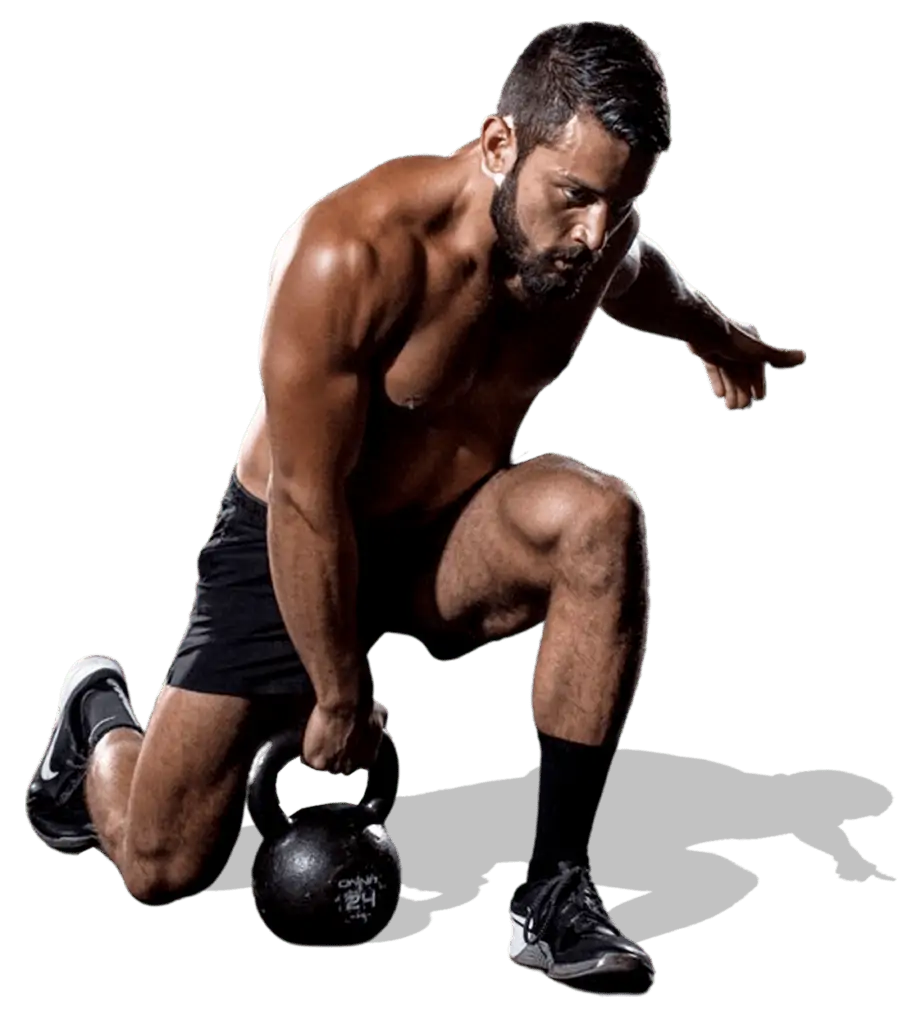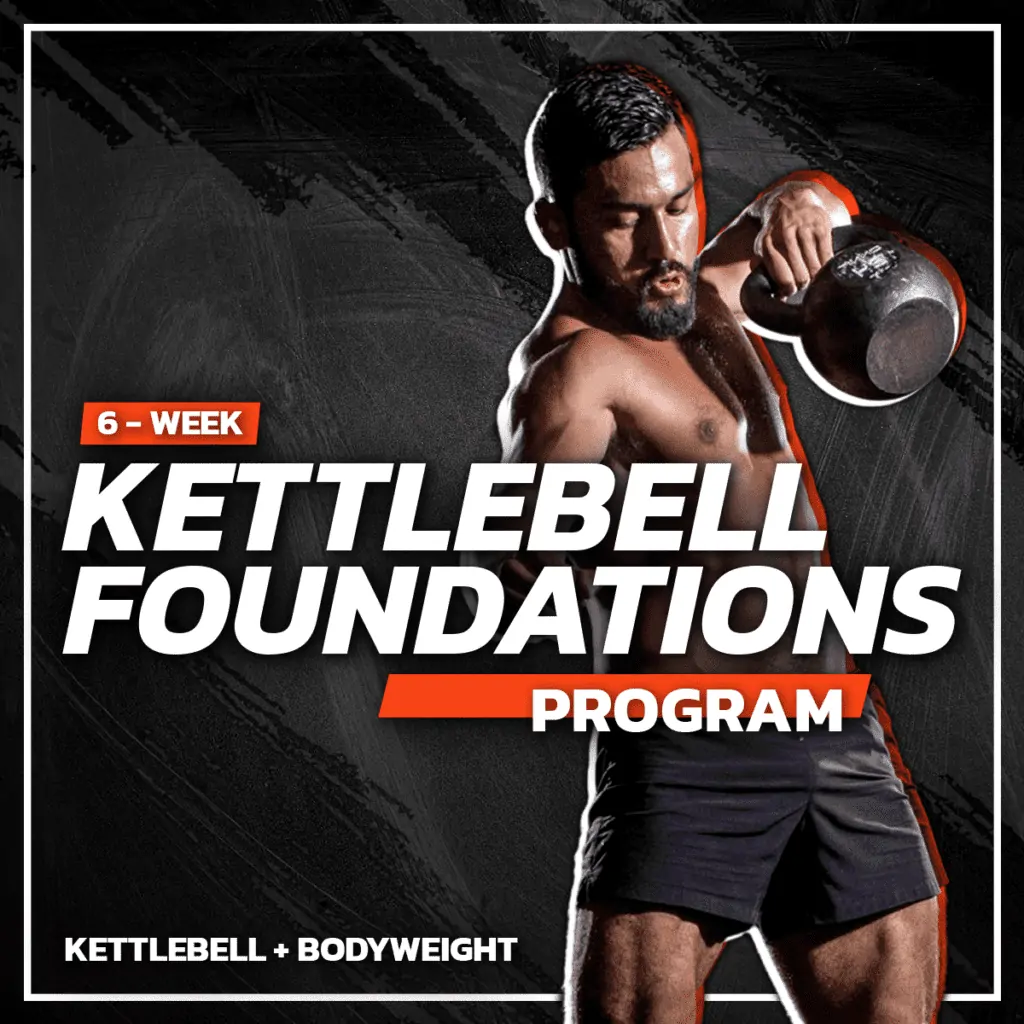
When you think about the word “foundation,” it helps to think of a house. If you want the strongest, most stable house that protects you for decades to come, what type of foundation do you build it on? Sand … or stone? Or perhaps strong wood?
Obviously, you’re going to choose the stronger elements, because the foundation is what holds your entire house in place!
Well, guess what? The same is true with your body.
Foundational movements help give your body a solid foundation of strength, so that you can build properly and effectively.
What Are Foundational Movements?

Foundational movements are basic, functional movements that not only build strength in their own right, but also serve as the base of other, more complicated movements. These movements are movements like squats, deadlifts, presses, and lunges; and, in the case of kettlebell work, swings and get-ups.
These movements mimic natural movements humans perform everyday (or, at least, our ancestors did!) when picking things up, pushing and pulling objects, and carrying materials. They are some of the first movements we engage in as children, since they help develop our major muscle groups.
These foundational movements act like the foundation for all of our movements; so, to have a stronger body, we need a stronger foundation.
Benefits of Foundational Movements
Whether you’re a beginner or seasoned vet, perfecting foundational movement patterns can massively benefit your strength, coordination, and power. If you’re new to working with ketlebells, the same benefits apply when it comes to kettlebell foundational movements.
Increases Strength and Power Output
Foundational movements are functional. They not only utilize large muscle groups, but also tend to work several at once, all while engaging smaller stabilizer muscles.
Why is this beneficial? Well, imagine a piece of fabric: when everything is seam tightly together, the fabric not only looks great, but if it’s a blanket or coat, it keeps you warmer, and is also stronger. If that same fabric has a weak link in a few sides, holes might develop, and causing the blanket or coat to let in air. And, since the entirety of the fabric isn’t sewn up tight, it’s actually weaker overall.
Our musculoskeletal system can be imagined like this. When everything is “sewn tight,” there are no weak links. Foundational movements avoid isolating muscles, which can leave other muscles weak. Instead, they all functional together during the movement, and are all strengthened together. This means the smaller muscles that support the larger muscles are also worked, so that they can support their growth.
As you can imagine, this creates a solid foundation of strength and can result in more power output. The stronger your foundation, the stronger your “pushes” and “pulls” can be, which ultimately results in larger muscles and more efficient movements.
After all, when you have a strong squat, this will translate into a strong base for heavier squats, a stronger kettlebell swing, more force through plyometric movements, and more.
Can Increase Speed and Coordination

Speed and coordination are also increased when we’ve mastered foundational movement patterns. Again: when all of our muscles are working strong together, we have faster reaction times. And, with more power available and more stability from the strength of the smaller muscles supporting our large muscle groups, we also have increased stability and coordination.
This is obviously excellent for sports, but also translates into real-world strength. If you ever need to complete a time-based challenge or simply react efficiently and quickly in real-life scenarios, foundational movements can help you do that.
Helps Mitigate Injury Risk
This is another biggie. Having a strong foundation can help reduce your risk of injury, especially muscle pulls and strains. This is because foundational movements are functional and tend to flow while using more than one muscle group, creating strength through various ranges of motion all at once.
This doesn’t leave much room for weak links, providing you’re performing the movement correctly.
Foundational kettlebell movements, for instance, are designed to strengthen throughout ranges of dynamic movement. Take the swing: multiple muscle ground, including your glutes, core, shoulders, and stabilizer muscles are working together to handle the weight of the bell. Because all smaller muscles are strengthened alongside the larger groups, it is less likely that one will be weaker than others and end up strained.
The risk of injuries can become higher when we only do isolation movements, since the surrounding muscles aren’t being strengthened simultaneously.
Increased Burn Potential
Typically, foundational movements are also compound movements, meaning they involve more than one muscle group. Because of this, the calorie burn is also typically higher and the muscle atrophy is typically higher (which means more gains).

Solid Foundation = Solid Strength 🔥
If you’re a beginner looking to build a solid foundation of strength, mobility, and conditioning, check out my upcoming 6-Week Kettlebell Foundations Program! This 6-Week Kettlebell Foundations program is designed to help EVERY BODY master fundamental kettlebell and bodyweight movements. These fundamentals create a solid foundation of strength and mobility that will elevate your fitness while perfecting your technique. Here, you’ll learn how to execute fundamental movements in the most efficient format possible, so you can sculpt and condition, no matter your level.
We start super soon, so join here and let’s get them goals!
Nice, can’t wait for the new program!
Stoked to start this!